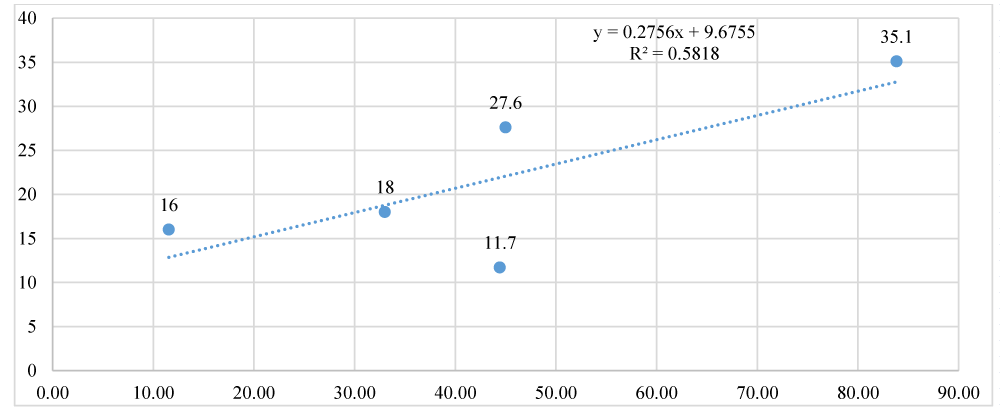Archives of Pulmonology and Respiratory Care
About the Need to Study the Effect of Soil Salinity on Diseases
BA Kamalov1* and DI Isakov2
1Doctor of Geography, Namangan State University, Uzbekistan
2Listener, Namangan State University, Uzbekistan
Cite this as
Kamalov BA, Isakov DI. About the Need to Study the Effect of Soil Salinity on Diseases. Arch Pulmonol Respir Care. 2024;10(1):023-024. Available from: 10.17352/aprc.000088Copyright License
© 2024 Kamalov BA,et al. This is an open-access article distributed under the terms of the Creative Commons Attribution License, which permits unrestricted use, distribution, and reproduction in any medium, provided the original author and source are credited.The article is devoted to the issues of diseases and their development characteristic of the conditions of saline lands, which have received little attention so far. Due to deficiencies in irrigated agriculture, salinization is increasing more and more. In some countries, the share of saline land is 32% - 78% of the total used land.
As a result of some studies, it was found that in areas with a lot of saline land, there is a higher incidence of diseases of the digestive organs and even cancer. In Mingbuloq District, Namangan Region of Uzbekistan, there was a high incidence of “Certain disorders related to the immune mechanism of diseases of blood and blood-forming organs (including anemia)” in adolescents under 14 years of age.
Almost 2 times more was found. Judging from statistical data, it is possible to note a high level of infant mortality in many countries with saline lands.
These data indicate that the study of the effects of salt-flooded lands on diseases is the most urgent problem.
In recent years, the salinity of agricultural land is increasing. For example, 32% - 78% of irrigated agricultural lands in countries such as Somalia, Liberia, Sierra Leone, Nigeria, Sudan, Tanzania, Pakistan, Turkmenistan, and Uzbekistan are saline.
As a result of some studies, it has been found that in areas with many saline areas, there is a higher occurrence of diseases of the digestive organs and even cancer [1]. In this regard, we conducted research in Mingbulok and Uchkurgan districts of the Namangan region of the Republic of Uzbekistan. The total area of Uchkurgan district is 290 km2, and the irrigated area is 24103 ha. The total area of Mingbulok district is 740 km2, and the irrigated area is 38,190 ha.
Both of these districts receive water from the same river for irrigation, and their territory consists of a plain sloping slightly to the west.
As a result of comparing the diseases observed in the districts, it was found that the number of diseases “Certain disorders related to the immune mechanism of diseases of blood and blood-forming organs (including anemia)” in Mingbulok district. For example, in Mingbuloq district in 2022, there were 1861 children under 14 years of age, and 11.3% of them were infected. In the same year, 6% of 3017 children were infected in Uchkurgan district. For the next 5 years, this ratio has been aging.
In addition, the high rate of infant mortality in countries with a large share of salt-flooded land in agriculture is particularly worrying. This can be caused by diseases of the respiratory tract and digestive organs. Because eating crops grown in saline areas can affect the composition of breast milk, some aerosols in the air in these areas can irritate the respiratory tract.
This is confirmed by the graph of the contribution of infant mortality to the contribution of saline lands (Figure 1).
The correlation coefficient of the dependence of infant mortality on salinity in Central Asian republics was 0.58. Adding data for France, which has less saline land, to this graph increased the correlation coefficient to 0.73. Based on these, it can be concluded that the level of salinity of the country’s land can affect the level of infant mortality.
Therefore, comprehensive research should be conducted in this regard.
- Guseynov AN. Zasolennost pochv i rak pishyevoda (na primere Gurevskiy oblasti Kazaxskoy SSR). Vestn MGU, Ser Geogr. 1978;(3):69-75.
- Ranking of countries in the world by infant mortality rate. United Nations Inter-Agency Group for Child Mortality Estimation. URL: https://gtmarket.ru/ratings/child-mortality-ranking
- Hassani A, Azapagic A, Shokri N. Global predictions of primary soil salinization under changing climate in the 21st century. Nat Commun. 2021;12(1):6663. https://doi.org/10.1038/s41467-021-26907-3
Article Alerts
Subscribe to our articles alerts and stay tuned.
 This work is licensed under a Creative Commons Attribution 4.0 International License.
This work is licensed under a Creative Commons Attribution 4.0 International License.



 Save to Mendeley
Save to Mendeley
